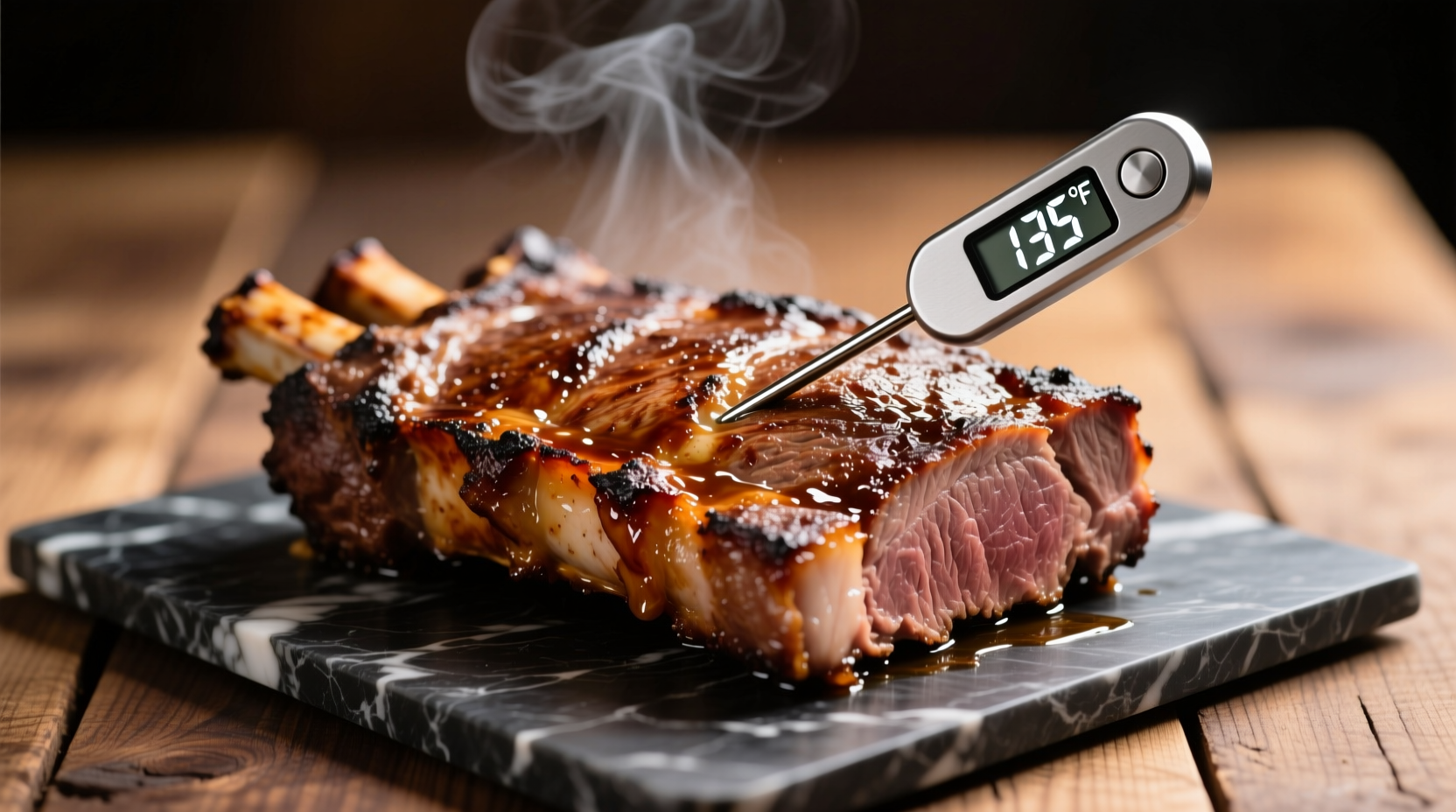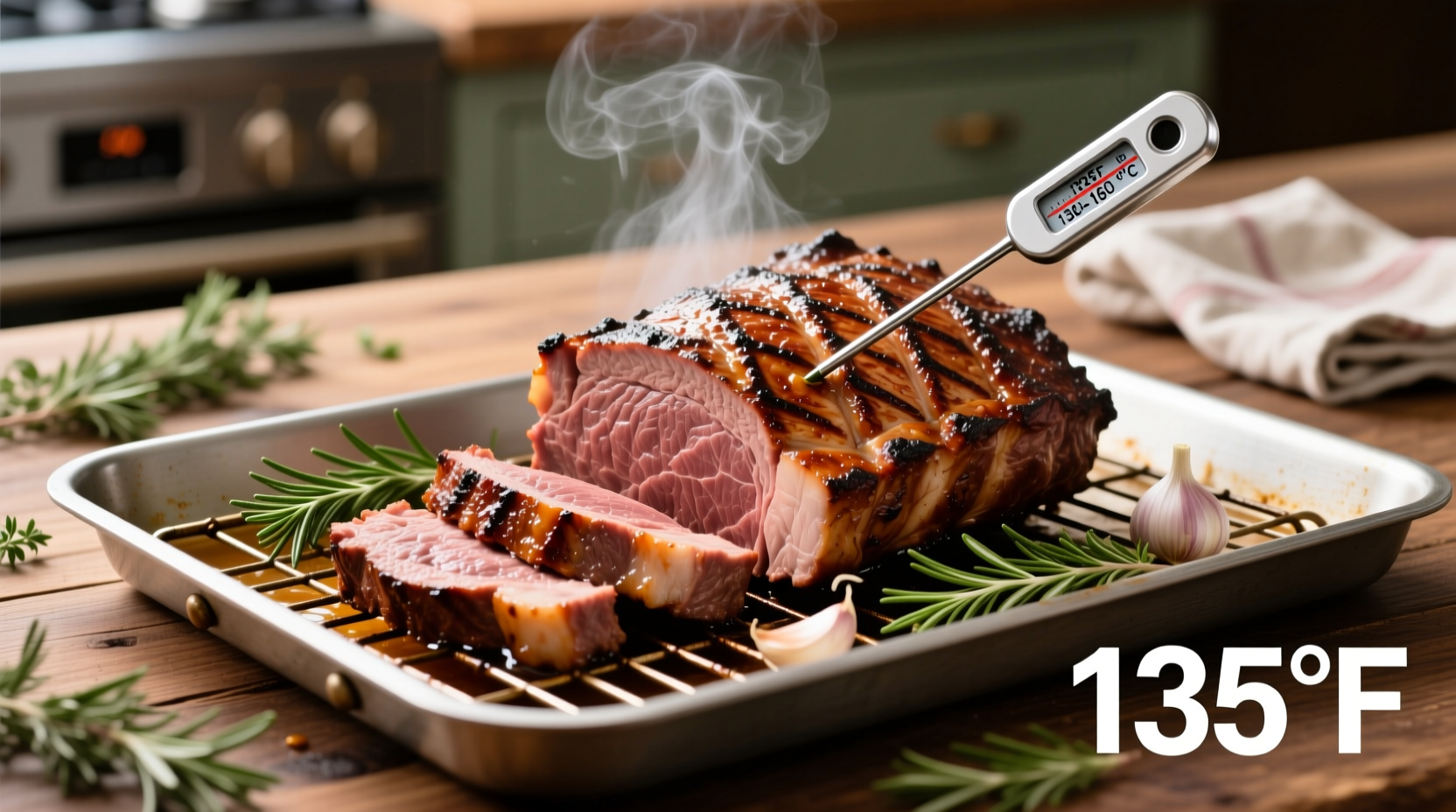Cooking prime rib properly separates culinary novices from confident home chefs. This comprehensive guide delivers precise timing information backed by food science principles, ensuring your holiday centerpiece turns out perfectly juicy every time. Whether you're preparing a special occasion meal or mastering foundational cooking techniques, understanding the relationship between weight, temperature, and time transforms intimidating roasts into reliable triumphs.
Prime Rib Fundamentals: Setting Yourself Up for Success
Before calculating cooking time, proper preparation determines your prime rib's outcome. The USDA Food Safety and Inspection Service emphasizes that bringing meat to room temperature before cooking promotes even heating (USDA.gov). Remove your roast from refrigeration 2-3 hours before cooking, depending on size. A 7-pound roast requires approximately 2.5 hours to reach optimal starting temperature.
Seasoning deserves attention beyond basic salt and pepper. Professional chefs like Antonio Rodriguez recommend dry-brining with kosher salt 24-48 hours in advance, which enhances both flavor penetration and surface texture for superior browning. "The extended salt exposure breaks down proteins slightly, creating a more tender final product while developing complex flavor layers," explains Rodriguez.
Understanding Cooking Time Variables
Many home cooks make the critical error of relying solely on time calculations without monitoring internal temperature. The actual cooking duration depends on three key factors:
- Oven temperature accuracy – Verify with an independent oven thermometer
- Roast size and shape – Bone-in roasts cook faster than boneless equivalents
- Starting temperature – A roast straight from the refrigerator adds 30-45 minutes to cooking time
| Doneness Level | Target Internal Temp | Resting Temp Rise | Final Serving Temp |
|---|---|---|---|
| Rare | 115-120°F | 5-10°F | 120-130°F |
| Medium-rare | 120-125°F | 5-10°F | 125-135°F |
| Medium | 130-135°F | 5-10°F | 135-145°F |
This temperature reference chart reflects current food safety standards from the USDA and culinary research institutions. Note that temperatures continue rising during resting—a phenomenon called carryover cooking. Removing your roast 5-10 degrees below target prevents overcooking.
Step-by-Step Cooking Timeline
Follow this professional chef-tested method for foolproof results:
- Preheat oven to 325°F (standard for most home ovens)
- Prepare roast by bringing to room temperature and seasoning
- Insert meat thermometer into thickest part, avoiding bone
- Roast undisturbed until thermometer approaches target temperature
- Remove early when 5-10°F below final desired temperature
- Rest covered loosely with foil for 20-45 minutes (15 minutes per pound)
For a 5-pound prime rib, expect approximately 75-85 minutes of actual oven time. Larger roasts (8+ pounds) may require up to 2.5 hours. The reverse sear method—starting at low temperature then finishing with high heat—provides exceptional edge-to-edge doneness but adds 1-2 hours to total preparation time.

Context Boundaries: When Standard Guidelines Don't Apply
While the 15-17 minutes per pound guideline works for most conventional ovens, certain conditions require adjustments:
- Convection ovens reduce cooking time by 20-25% due to circulating hot air
- Smoker or grill cooking requires lower temperatures (225-250°F) and longer duration
- Thermometer placement errors can create false readings near bones or fat pockets
- High-altitude cooking above 3,000 feet may require extended cooking times
Food science research from the University of California Davis confirms that altitude affects boiling points and heat transfer, potentially increasing cooking times by 15-25% at elevations above 5,000 feet (UC Davis Food Safety). Adjust accordingly if you live in mountainous regions.
Troubleshooting Common Prime Rib Problems
Even experienced cooks encounter issues. Here's how to handle frequent challenges:
"My prime rib is undercooked!"
If your roast hasn't reached target temperature but time has elapsed, check thermometer placement first. If correctly positioned, increase oven temperature by 25°F and continue monitoring every 10 minutes. Never return severely undercooked meat to the oven after resting—slice thin portions and sear in a hot skillet instead.
"The outside is overcooked but center is raw"
This indicates uneven heating, often from improper oven calibration or opening the oven door frequently. For future roasts, invest in an oven thermometer and resist checking the roast until the final 30 minutes. The reverse sear method solves this problem by starting with low-and-slow cooking before finishing with high heat.
"My prime rib turned out dry"
Dryness typically results from overcooking or insufficient resting time. Remember that carryover cooking continues during resting—remove your roast 5-10 degrees below target temperature. Proper resting allows juices to redistribute; slicing too soon releases moisture onto your cutting board rather than staying in the meat.
Advanced Techniques for Culinary Excellence
Once you've mastered standard preparation, consider these professional methods:
- Reverse sear – Cook at 225°F until 110°F internal temperature, then finish at 500°F for 8-10 minutes
- Dry-aging at home – Refrigerate uncovered for 14-28 days to concentrate flavor
- Herb crust variations – Incorporate fresh rosemary, thyme, or garlic paste under the fat cap
These techniques require additional time investment but deliver restaurant-quality results. The reverse sear method, while adding 1-2 hours to total preparation, provides remarkable edge-to-edge doneness that traditional methods struggle to achieve.
Frequently Asked Questions
Should I cook prime rib fat side up or down?
Always position with fat side up. As the fat renders during cooking, it bastes the meat naturally, enhancing flavor and moisture retention. Placing fat side down creates uneven cooking and prevents this self-basting process.
Can I cook prime rib from frozen?
While possible, cooking frozen prime rib extends cooking time by 50% and risks uneven results. Thawing in the refrigerator for 24-48 hours produces superior texture and more predictable cooking times. If cooking from frozen, increase estimated time by 1.5x and monitor temperature carefully.
How do I know when prime rib is done without a thermometer?
While a thermometer is essential for accuracy, experienced cooks use the "hand test" – comparing the firmness of the roast to the fleshy part of your palm. However, this method lacks precision and carries significant risk of under or overcooking. Investing in a reliable instant-read thermometer costs less than replacing an expensive roast.
Why does my cooking time differ from online calculators?
Oven temperature variations, roast shape, starting temperature, and thermometer accuracy all affect cooking duration. Online calculators provide estimates only. Always prioritize internal temperature over time calculations for perfect results.











 浙公网安备
33010002000092号
浙公网安备
33010002000092号 浙B2-20120091-4
浙B2-20120091-4